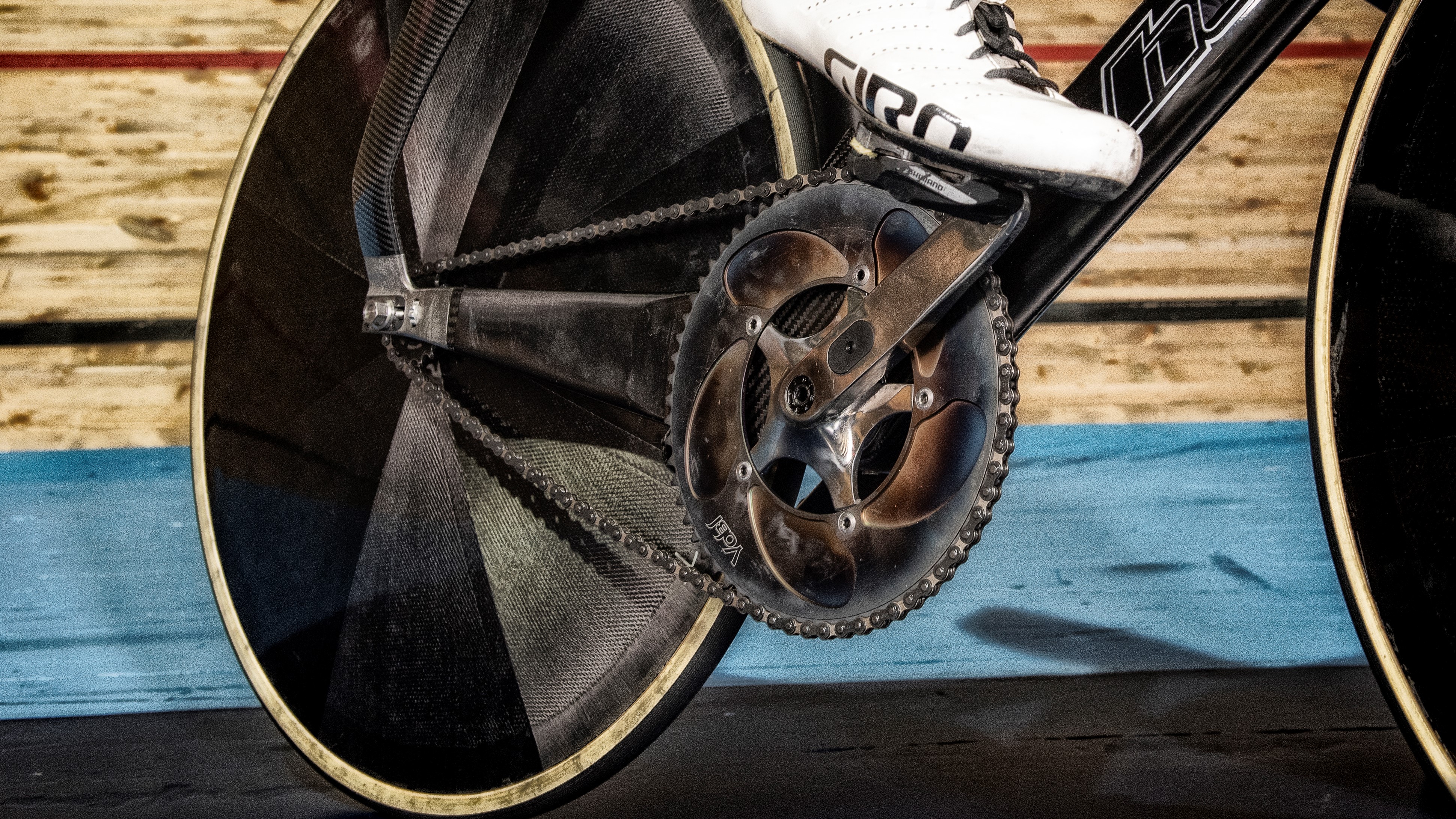New Verve Infocrank 3D Ti: a 3D-printed power meter with an interstellar price tag
High-tech kit with an even higher price. At £4,750, the Infocrank 3D Ti is the most expensive power meter available at the moment

Accurate power measurement has been at the forefront of cycling performance for a good while now, and for a lot of riders making the leap and installing one of the best power meters is a landmark step in their cycling career. While many would likely represent an expensive purchase in their own right, with most running into the hundreds of pounds, the new Infocrank 3D Ti from Verve Cycling sets a new standard for both complex manufacturing and eye-watering price in the powermeter market.
Overview
Power meters aren’t often lauded for their subtlety of design; power pedals come with lumpen pods, spider systems can ruin the delicate flow of the curves of the crankset, and crank arm systems often rely on an external pod. What sets the new Infocrank 3D Ti apart in this regard is the near seamless integration of the strain gauges; at first glance you could be forgiven this is a very shiny, very attractive, but otherwise unremarkable set of five-arm track cranks.
In order to create this new crank-based power meter, Verve has partnered with Metron Additive Manufacturing, the company responsible for other famous 3D-printed titanium objects of desire, regularly adorning the bikes of the Team GB track squad and out on the road beneath team Sky/Ineos riders.
‘Additive manufacturing’, in this case with metal, rather than the more common plastics, simply involves building an object up in multiple small slices, rather than traditional casting and machining processes. This means the cranks can be designed in such a way as to house the torque measurement and electronics in a much neater fashion.
Data harvesting
Verve claims “unmatched accuracy” for the titanium Infocrank, but on closer inspection of the tech sheets this is actually a slightly vague <1%. Given that most new power meters, such as the new Wahoo Powrlink Zero pedals, aim for the industry standard that sits at +/- 1%, some additional qualification is needed to cement this claim.
Data is captured every 1/1000th second for cadence and 256 times a second for torque values. Where the Infocrank 3D Ti stands apart is that, thanks to the manufacturing process, the strain gauges are placed in such a way as to solely isolate the tangential forces (that is those forces driving the rider forwards). As such, they don’t rely on multiple measurements and algorithms, and so don’t need calibrating or regular zero-ing prior to use.
Data, as is standard, is transmitted to your device of choice via ANT+.
The latest race content, interviews, features, reviews and expert buying guides, direct to your inbox!

A cutting-edge design
In all honesty, the five-arm crank that is near ubiquitous in the track world doesn’t leave a great deal of room for artistic flair. That being said, the additive manufacturing process and polished finish lead to a crankset that looks more organic than most.
The majority of the design process, it seems, has gone into the internals. With 3D printing, Verve and Metron have precise controls over the innards, and are therefore able to add reinforcement where needed, and simply not add material where it isn't needed. This results in a lighter system, as well as one tailored for the forces at play for its given use.
While the track cranks mount to an ISIS bottom bracket the road versions, due for release in spring, will be built around a 24mm spindle, allowing their use with many BB systems. The axle will have some claimed proprietary design, so it is assumed the axle will be 3D printed into the system, rather than bonded as is common.
Thanks also to the manufacturing process the cranks can be tailored to any rider with pockets deep enough to afford them. Any length you need, or even different lengths one side to another to account for biomechanical discrepancies, it’s all possible for those willing to pay.
Eye-watering price
There’s really no escaping the fact these are an outrageously costly bit of kit. At £4,750, or approximately $6,450, they are more expensive than other options commercially available and likely don’t represent a realistic purchase for most users.
Given that they feature on the Lotus x Hope HB.T of the Team GB track squad, with hints towards MTB and BMX applications down the line, it isn’t a stretch to conclude these are perhaps priced for those with national federation funding after the smallest of marginal gains, and importantly to satisfy the commercial availability clauses in the giant UCI rulebook.

Will joined the Cyclingnews team as a reviews writer in 2022, having previously written for Cyclist, BikeRadar and Advntr. He’s tried his hand at most cycling disciplines, from the standard mix of road, gravel, and mountain bike, to the more unusual like bike polo and tracklocross. He’s made his own bike frames, covered tech news from the biggest races on the planet, and published countless premium galleries thanks to his excellent photographic eye. Also, given he doesn’t ever ride indoors he’s become a real expert on foul-weather riding gear. His collection of bikes is a real smorgasbord, with everything from vintage-style steel tourers through to superlight flat bar hill climb machines.